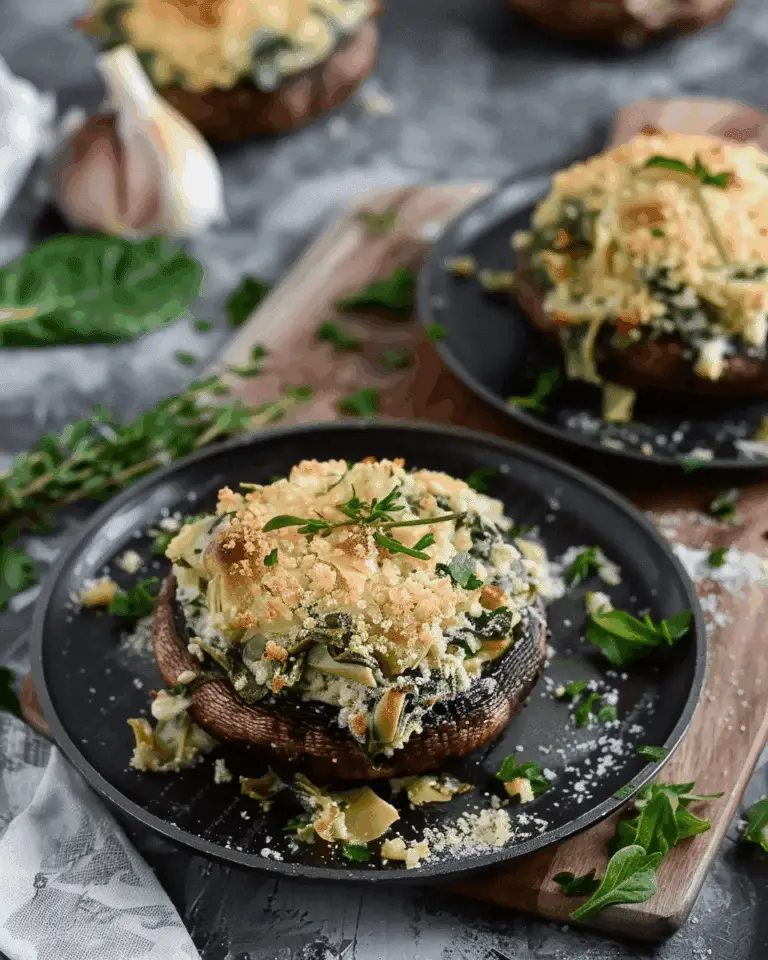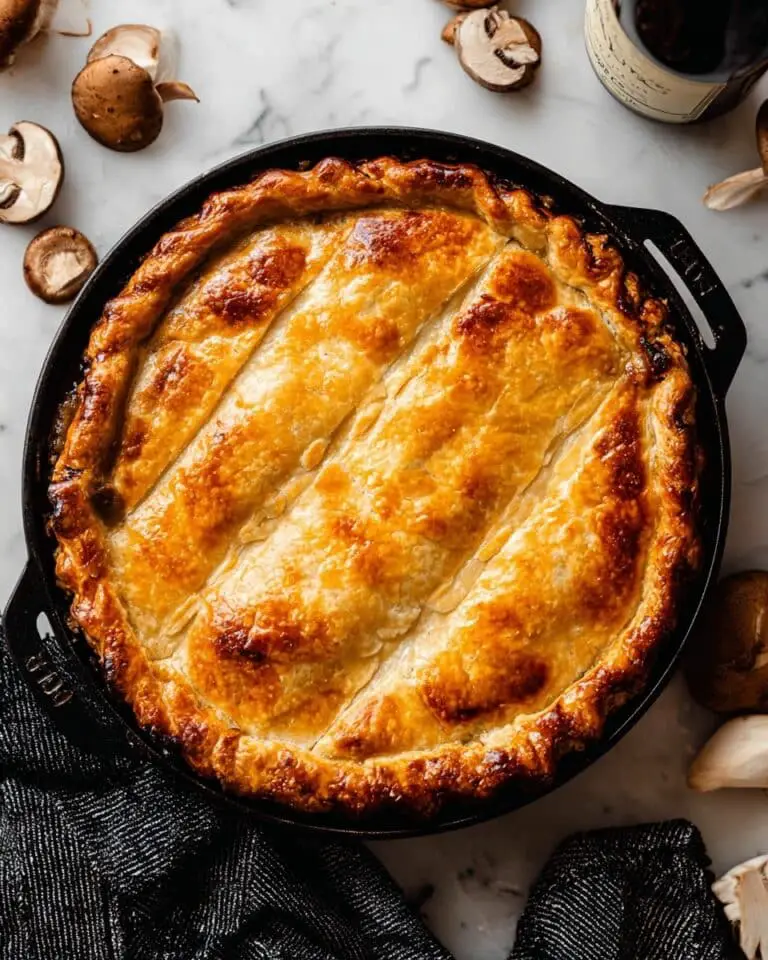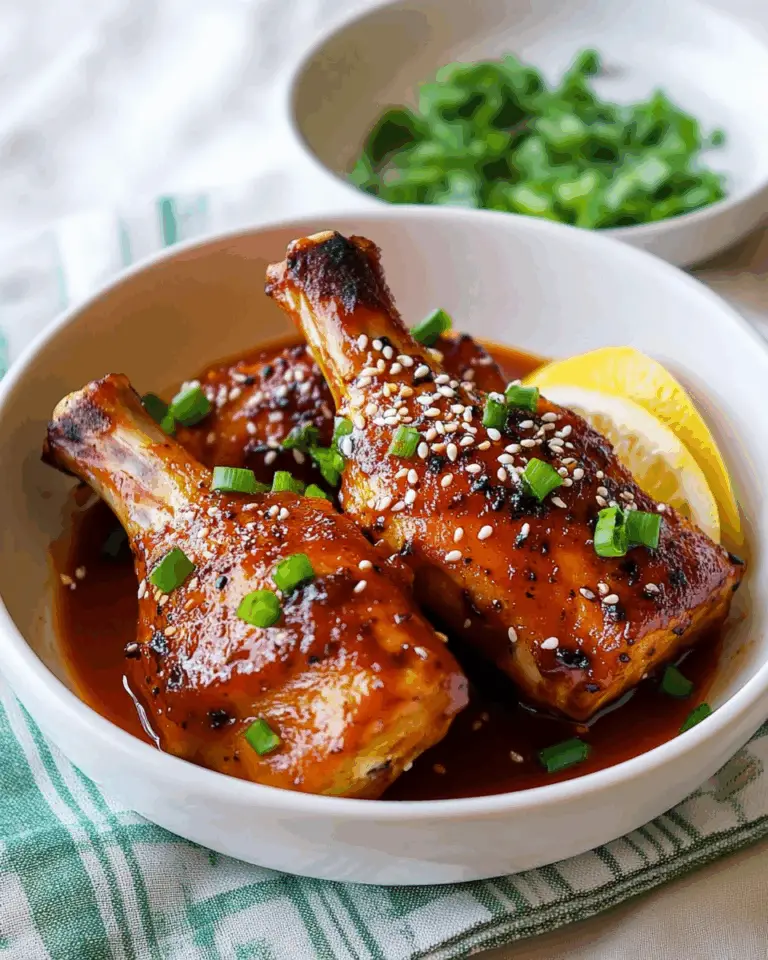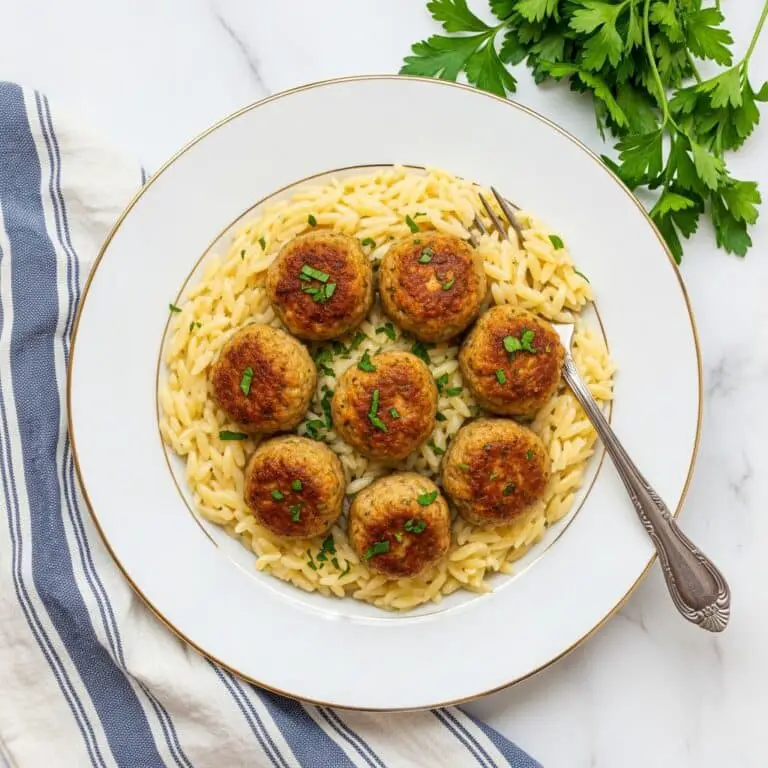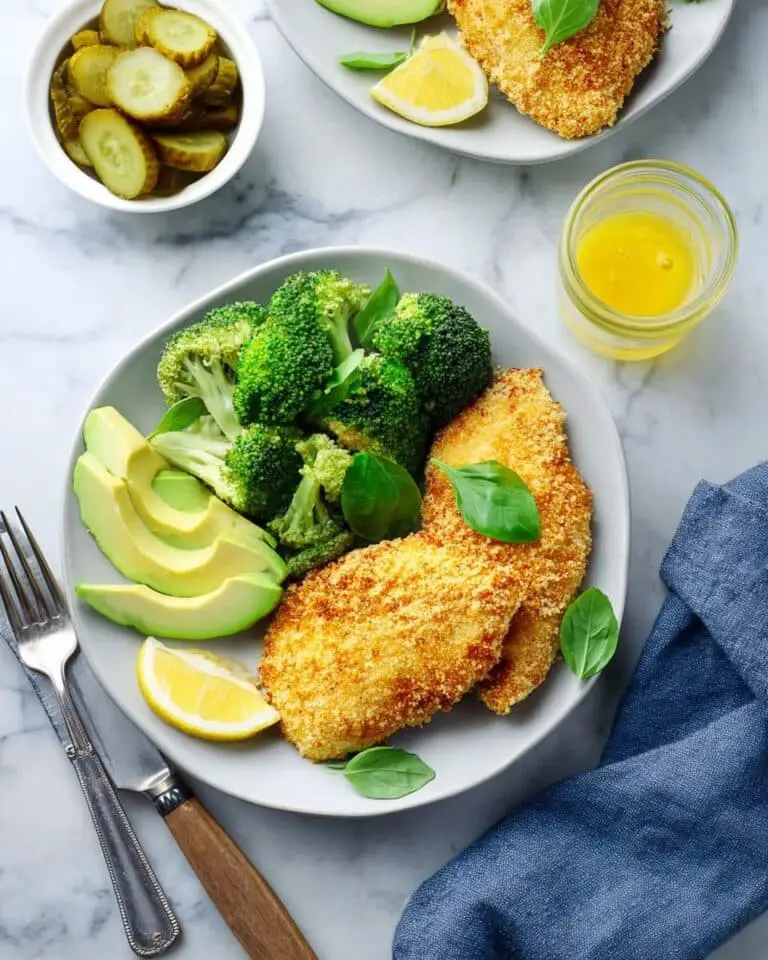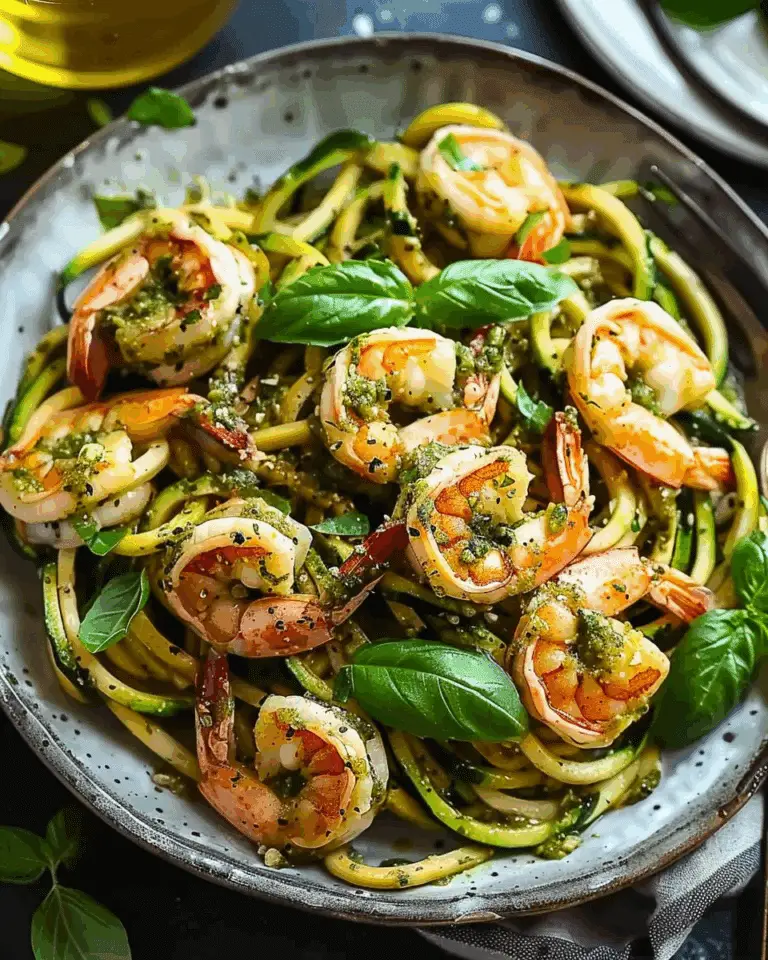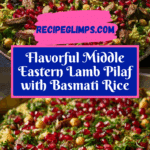“`html
If you are looking for a dish that bursts with warm spices, tender meat, and a vibrant mix of textures, you simply must try this Middle Eastern lamb pilaf. This recipe brings together fragrant basmati rice, hearty chickpeas, and succulent lamb, all kissed with a blend of earthy cumin and curry powder. Every spoonful tells a story of rich flavors and wholesome ingredients, making it a standout dish that’s perfect for sharing with friends and family. Whether you’re cooking a comforting weeknight dinner or impressing guests, this Middle Eastern lamb pilaf offers both simplicity and sophistication in every bite.
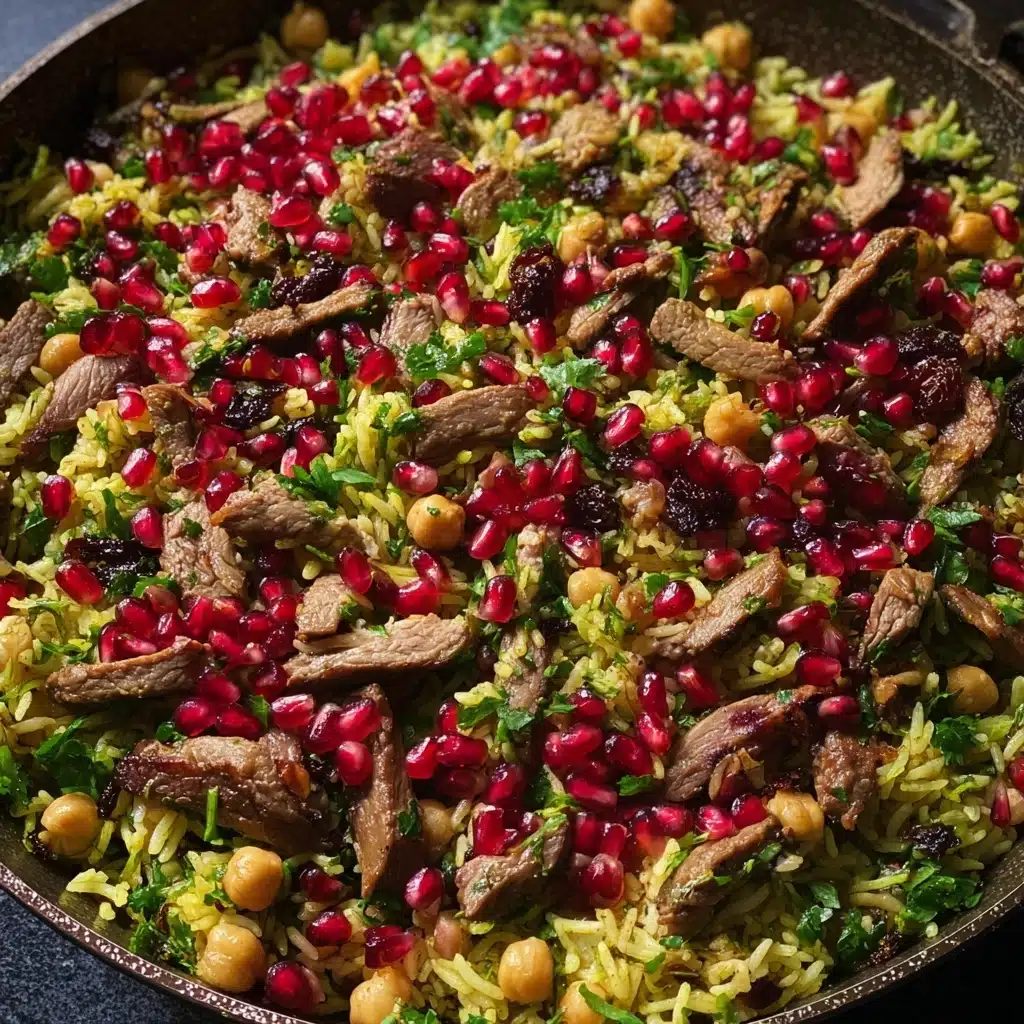
Ingredients You’ll Need
The beauty of this Middle Eastern lamb pilaf lies in how straightforward yet impactful the ingredients are. Each one plays an essential role, from the vibrant herbs that brighten the dish to the spices that build its unmistakable character.
- 1/3 cup Coles extra virgin olive oil: Adds richness and a smooth mouthfeel while gently carrying the spices.
- 1 brown onion, finely chopped: Brings subtle sweetness and forms a flavorful base when sautéed.
- 2 garlic cloves, crushed: Infuses the dish with an aromatic punch that complements the lamb beautifully.
- 1 cup basmati rice: The fluffy, long grains soak up the steamy flavors and create the perfect texture contrast.
- 1 1/2 cups chicken stock: Provides depth and moisture, cooking the rice to tender perfection.
- 1 1/2 tsp curry powder: Offers a mild yet tantalizing warmth that ties the dish together.
- 3 tsp ground cumin: Gives earthy, nutty notes that are key to authentic Middle Eastern flavor.
- 400g can Coles Chickpeas, drained and rinsed: Adds protein and a lovely creamy texture within the rice.
- 3 cups cold shredded leftover cooked lamb: Tender lamb brings heartiness and a smoky richness to this pilaf.
- 1/2 cup currants (or sultanas): Stir in sweet bursts that balance the spices perfectly.
- 1/2 cup fresh coriander leaves, roughly chopped: Lends a fresh, citrusy brightness to the dish.
- 1/2 cup fresh flat-leaf parsley leaves, roughly chopped: Adds herbal freshness and color contrast.
- 1/4 cup lemon juice: Brings a zesty tang to lift all the flavors, rounding out the pilaf.
- 1/2 pomegranate, seeds removed: For popping jewel-like bursts of sweetness and a stunning garnish.
How to Make Middle Eastern lamb pilaf
Step 1: Sauté Aromatics and Cook Rice
Begin by heating one tablespoon of olive oil in a large saucepan over medium-high heat. Toss in the finely chopped onion and crushed garlic, and cook them for about 3 minutes until the onion softens and becomes fragrant. This is where the foundation of your pilaf’s flavor begins to build. Next, add the basmati rice, stirring so each grain is coated in the aromatic base. Pour in the chicken stock, then sprinkle in one teaspoon of curry powder, two teaspoons of cumin, and the chickpeas. Stir everything together, cover the pan, reduce the heat to medium-low, and let the rice absorb the flavors as it cooks tenderly for 12 to 15 minutes. Once done, remove it from heat and set aside, letting it rest for 10 minutes before fluffing it gently with a fork to separate the grains.
Step 2: Warm and Season the Lamb
While the rice is resting, grab a large non-stick frying pan and warm another tablespoon of olive oil over high heat. Add the shredded leftover lamb, sprinkling the remaining curry powder and cumin over the meat. Season with salt and pepper for balance. Cook for just two minutes, stirring once, until the lamb is heated through and beautifully browned. This quick sear reawakens the lamb’s flavor and texture, making it a delicious centerpiece for your pilaf. Transfer the tender lamb to a large bowl, ready for mixing with the rice.
Step 3: Combine and Finish the Pilaf
Now comes the fun part: bringing all the components together. To the bowl with lamb, add the cooked rice mixture, currants, chopped coriander, parsley, fresh lemon juice, and the remaining olive oil. Toss everything gently to combine, ensuring the flavors meld without breaking up the rice and lamb. Taste and adjust salt and pepper as needed. Serve your Middle Eastern lamb pilaf proudly, finished with a scattering of vibrant pomegranate seeds that add a juicy pop and stunning color contrast.
How to Serve Middle Eastern lamb pilaf
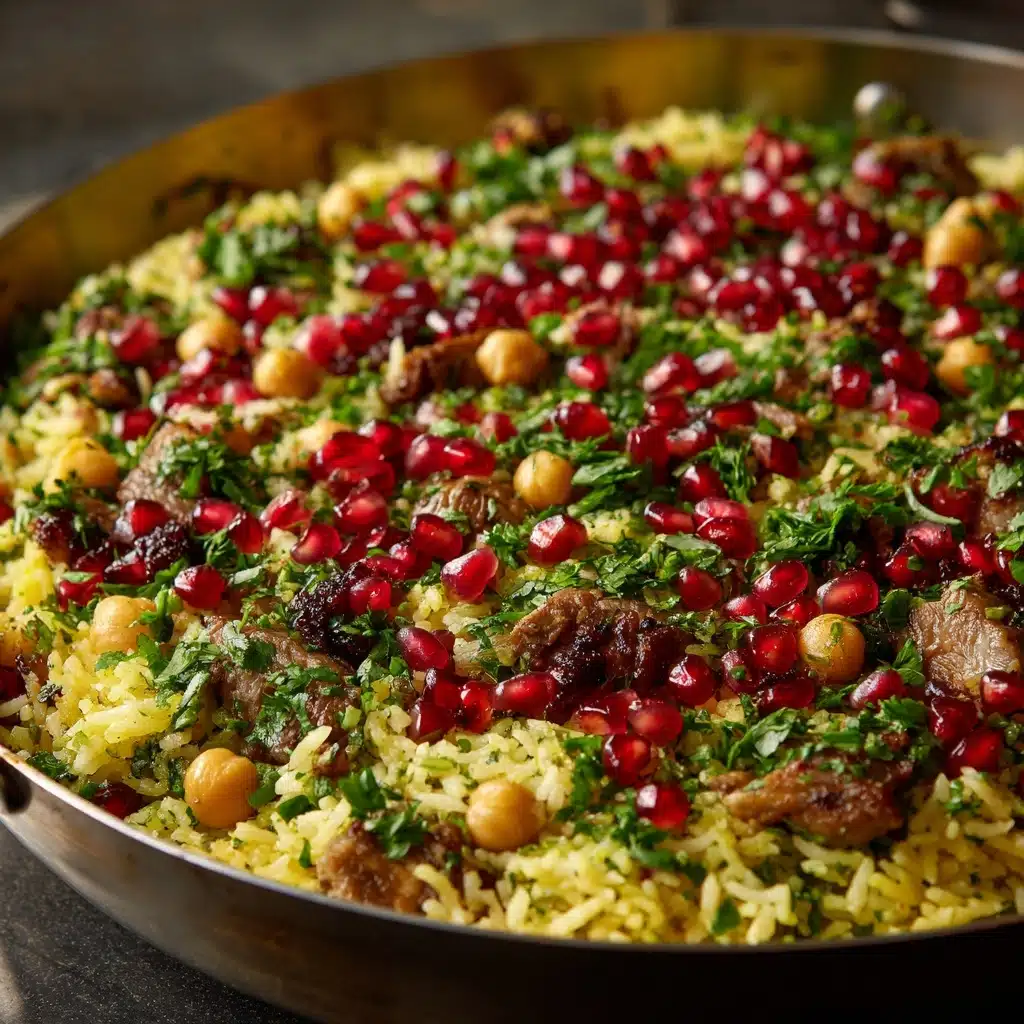
Garnishes
The magic of presenting Middle Eastern lamb pilaf is in the finishing touches. The pomegranate seeds are an absolute must because they give the dish jewel-like pops of sweetness and a wonderful crunch. Fresh coriander and parsley sprinkled on top elevate the aroma and add a burst of green freshness that brightens the pilaf. For a touch more texture and flavor, toasted pine nuts or slivered almonds also make wonderful additions as garnishes.
Side Dishes
This lamb pilaf is hearty and flavorful on its own, but pairing it with simple sides really rounds out the meal. Consider a cool cucumber-yogurt salad or a fresh tabbouleh to add crispness and lighten the plate. Roasted vegetables with a drizzle of lemon or a tangy fattoush salad bring complementary flavors and textures that echo Middle Eastern culinary traditions. Soft warm pita bread is also perfect for scooping up every last bit of this delicious pilaf.
Creative Ways to Present
For a visually stunning presentation, serve your Middle Eastern lamb pilaf in communal bowls to inspire sharing and conversation. Layer the pilaf with slices of roasted vegetables for a colorful effect, or fashion individual portions into small domes using a bowl before flipping onto plates. Adding edible flowers or a drizzle of pomegranate molasses can turn this rustic dish into a sophisticated centerpiece perfect for entertaining. Let your creativity shine while keeping the comforting spirit of the pilaf front and center.
Make Ahead and Storage
Storing Leftovers
Middle Eastern lamb pilaf keeps beautifully for up to three days in an airtight container in the refrigerator. Since the flavors tend to develop even more after resting, leftovers are often tastier the next day. Store garnishes separately when possible to maintain their freshness.
Freezing
If you want to enjoy this dish another time, freezing is an excellent option. Cool the pilaf completely before transferring it to a freezer-safe container or heavy-duty ziplock bag. It will keep well for up to two months. When freezing, avoid adding fresh herbs or pomegranate seeds, as they do not freeze well—add those fresh upon reheating.
Reheating
To reheat, gently warm the pilaf in a saucepan over medium-low heat, adding a splash of water or stock to revive moisture. Stir occasionally until heated through. Alternatively, you can microwave leftovers in a covered dish, stirring halfway through. Top with fresh herbs and pomegranate seeds just before serving for the best flavor and texture.
FAQs
Can I use fresh lamb instead of leftover cooked lamb?
Absolutely! If you prefer fresh lamb, brown it in the pan first and then let it simmer gently until tender before adding it to the pilaf. Just adjust cooking times accordingly to ensure it’s fully cooked and tender.
What can I substitute for basmati rice?
While basmati rice provides light, fluffy grains perfect for this pilaf, you can use jasmine rice as an alternative. Just make sure to adjust the liquid amounts slightly, as different rice varieties absorb water differently.
Is this recipe suitable for vegetarians?
This Middle Eastern lamb pilaf centers on lamb, but you can easily adapt it by omitting the meat and increasing the chickpeas and vegetables for a hearty vegetarian pilaf. Adding roasted eggplant or mushrooms can give it additional depth.
Can I make this dish spicier?
Definitely! If you like heat, consider adding a pinch of cayenne pepper or some chopped fresh chili when cooking the aromatics. Just balance the spice with the sweetness from the currants and pomegranate seeds for a harmonious flavor.
What type of curry powder works best here?
Go for a mild to medium curry powder blend that includes warm spices like turmeric, coriander, and cumin—it complements the other ingredients without overwhelming the dish. Avoid overly hot or highly complex blends that could overshadow the lamb’s natural flavor.
Final Thoughts
This Middle Eastern lamb pilaf is one of those special dishes that feels like a warm hug after the first bite. It combines savory, sweet, tangy, and herbal notes in such a beautifully balanced way that you’ll want to make it again and again. Whether sharing it with loved ones or enjoying it as a comforting solo meal, this pilaf truly celebrates the heart and soul of Middle Eastern cooking. So grab your ingredients, put on your favorite music, and dive in—you’re about to create something unforgettable.
“`
Print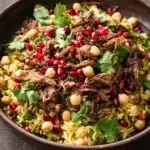
Middle Eastern lamb pilaf Recipe
- Total Time: 35 minutes
- Yield: 4 servings
- Diet: Halal
Description
A fragrant and flavorful Middle Eastern lamb pilaf featuring tender shredded lamb, basmati rice cooked with warm spices and chickpeas, fresh herbs, currants, and a zesty lemon and pomegranate finish. Perfect as a hearty main dish with a balance of savory and bright notes.
Ingredients
Rice and Vegetables
- 1/3 cup Coles extra virgin olive oil
- 1 brown onion, finely chopped
- 2 garlic cloves, crushed
- 1 cup basmati rice
- 1 1/2 cups chicken stock
- 1 1/2 tsp curry powder
- 3 tsp ground cumin
- 400g can Coles Chickpeas, drained, rinsed
Lamb and Additions
- 3 cups cold shredded leftover cooked lamb
- 1/2 cup currants (or sultanas)
- 1/2 cup fresh coriander leaves, roughly chopped
- 1/2 cup fresh flat-leaf parsley leaves, roughly chopped
- 1/4 cup lemon juice
- 1/2 pomegranate, seeds removed
Instructions
- Sauté Aromatics and Cook Rice: Heat 1 tablespoon of olive oil in a large saucepan over medium-high heat. Add the finely chopped onion and crushed garlic, cooking while stirring for about 3 minutes until the onion softens. Add the basmati rice and stir to coat it in the aromatic mixture. Pour in the chicken stock, then add 1 teaspoon of curry powder, 2 teaspoons of ground cumin, and the drained chickpeas. Stir to combine, cover with a lid, reduce the heat to medium-low, and cook for 12 to 15 minutes until the liquid is absorbed.
- Rest and Fluff Rice: Remove the saucepan from the heat and let the rice sit, covered, for 10 minutes to steam. After resting, use a fork to fluff the rice gently and separate the grains for a light texture.
- Brown the Lamb: While the rice rests, heat 1 tablespoon of the remaining olive oil in a large non-stick frying pan over high heat. Add the shredded lamb, sprinkle with the remaining 1/2 teaspoon curry powder and 1 teaspoon cumin, and season with salt and pepper. Cook for about 2 minutes, stirring once, until the lamb is browned and heated through. Transfer the lamb to a large mixing bowl.
- Combine Ingredients: Add the fluffed rice mixture to the bowl with the lamb. Then add the currants, roughly chopped coriander, parsley, lemon juice, and the remaining tablespoon of olive oil. Toss everything gently to combine, seasoning again with salt and pepper to taste.
- Serve with Pomegranate: Spoon the pilaf onto serving dishes and sprinkle with fresh pomegranate seeds for a pop of color and a burst of tartness. Serve warm or at room temperature.
Notes
- Leftover cooked lamb works best for this recipe, but you can substitute with cooked lamb shoulder or leg cooked until tender and shredded.
- If you don’t have chicken stock, vegetable stock can be used as a substitute for a lighter flavor.
- Currants can be replaced with sultanas or golden raisins for similar sweetness.
- For a vegetarian version, omit the lamb and increase chickpeas or add roasted vegetables.
- To save time, soak basmati rice for 20 minutes before cooking to reduce cooking time and improve texture.
- Prep Time: 15 minutes
- Cook Time: 20 minutes
- Category: Main Course
- Method: Sautéing, Simmering
- Cuisine: Middle Eastern
Nutrition
- Serving Size: 1 cup (about 250g)
- Calories: 420 kcal
- Sugar: 7 g
- Sodium: 580 mg
- Fat: 14 g
- Saturated Fat: 3.5 g
- Unsaturated Fat: 9 g
- Trans Fat: 0 g
- Carbohydrates: 45 g
- Fiber: 6 g
- Protein: 25 g
- Cholesterol: 55 mg

